Endurance, Engineering, and the Evolution of The Great Race
The Origins of Bathurst – From Phillip Island to Mount Panorama
The Bathurst 1000 began life as the Armstrong 500, a 500-mile production car race held at Phillip Island in 1960. Originally designed to promote suspension technology, the race featured everyday vehicles grouped by engine capacity. By 1963, the deteriorating condition of the Phillip Island circuit forced organizers to relocate the event to Bathurst’s Mount Panorama. The new venue was a street circuit with dramatic elevation changes and blind corners, quickly earning a reputation for danger and spectacle. In 1973, the race distance was extended to 1000 kilometers, cementing its identity as a true endurance test. The event evolved from a dealership showcase into a professional battleground for manufacturers and elite drivers.
Ford and Holden dominated the early decades, fueling a rivalry that defined Australian motorsport culture. Peter Brock emerged as the race’s most iconic figure, winning nine times and earning the nickname “King of the Mountain.” The Peter Brock Trophy was introduced in 2006 to honor his legacy. Over the years, Bathurst became a cornerstone of the Supercars Championship, attracting international attention and media coverage. Today, the race is known as the Repco Bathurst 1000 and remains the most prestigious touring car event in the Southern Hemisphere. Its history reflects the evolution of Australian motorsport from grassroots grit to global spectacle.

Bathurst 1000 – Australia’s Toughest Race
Mount Panorama Circuit Profile
| Feature | Specification | Strategic Importance |
|---|---|---|
| Total Length | 6.213 km | Defines endurance and lap strategy |
| Elevation Change | 174 meters | Creates technical and physical challenge |
| Number of Corners | 23 | Demands precision and adaptability |
| Fastest Section | Conrod Straight (up to 300 km/h) | Tests aero and braking systems |
| Most Technical Section | The Dipper and The Esses | Requires chassis balance and control |
| Visibility Hazards | Fog and blind crests at Skyline | Increases risk and driver reliance |
| Surface Variation | Public road with mixed grip levels | Affects tire wear and setup |
| Weather Volatility | Rapid changes due to geography | Forces strategic flexibility |
Setting the Stage – Logistics and Preparation for Race Week
Bathurst 1000 is thought to be Australia’s Toughest Race. Organizing the Bathurst 1000 requires months of planning and coordination across multiple sectors. The Mount Panorama Circuit is a public road for most of the year, meaning it must be closed and converted into a race-ready venue. Temporary infrastructure includes grandstands, pit garages, media centers, and hospitality suites. Teams begin arriving up to a week in advance to set up their garages, calibrate equipment, and conduct track walks. Scrutineering ensures all vehicles meet technical regulations, including fuel capacity, safety systems, and aerodynamic compliance.
The circuit itself spans 6.213 kilometers with 23 corners and a 174-meter elevation change. Race control installs timing loops, telemetry receivers, and safety barriers along the track. Medical teams, marshals, and fire crews are stationed at key points for rapid response. Fan zones, merchandise tents, and food vendors transform Bathurst into a motorsport festival. The event includes support races, autograph sessions, and pit stop challenges to engage spectators. Broadcast crews deploy aerial drones, trackside cameras, and commentary booths to deliver live coverage. Every detail — from tire allocation to fuel logistics — is meticulously managed to ensure the race unfolds without disruption.
Bathurst vs. Global Endurance Races
| Race | Duration | Circuit Type | Unique Feature |
|---|---|---|---|
| Bathurst 1000 | ~6 hours | Street circuit | Elevation, tribal fan culture |
| 24 Hours of Le Mans | 24 hours | Permanent circuit | Night racing, hybrid tech |
| Nürburgring 24 | 24 hours | Mixed circuit | Longest track, weather extremes |
| Daytona 500 | ~3.5 hours | Oval circuit | Pack racing, restrictor plates |
| Spa 24 Hours | 24 hours | Permanent circuit | Rain variability, GT3 focus |
| Suzuka 10 Hours | 10 hours | Technical circuit | Asian endurance showcase |
| Dubai 24 Hour | 24 hours | Desert circuit | Heat management, international entries |
| Petit Le Mans | 10 hours | Road course | IMSA format, multi-class racing |
The Circuit – Anatomy of Mount Panorama’s Challenge
Mount Panorama is one of the most technically demanding circuits in global motorsport. The track begins with Hell Corner, a sharp left-hander that sets the tone for the lap. Drivers accelerate up Mountain Straight, reaching speeds of 255 km/h before entering Griffin’s Bend, an off-camber right-hander. The Cutting follows — a steep, narrow climb that punishes poor gear selection and braking. Reid Park and Sulman Park offer little margin for error, with blind apexes and limited runoff. McPhillamy Park leads into Skyline, where drivers plunge into The Esses at over 220 km/h.
The Dipper is a sudden drop that compresses suspension and tests chassis balance. Forrest’s Elbow demands precision before launching onto Conrod Straight, the fastest section of the track. Cars reach 300 km/h before entering The Chase, a high-speed chicane that requires bravery and control. The final corner leads back to the start-finish line, completing a lap that combines elevation, speed, and technical complexity. Weather conditions — including fog, rain, and wind — often add unpredictability to the race. The circuit’s layout rewards experience, punishes mistakes, and demands total concentration for every one of its 161 laps.
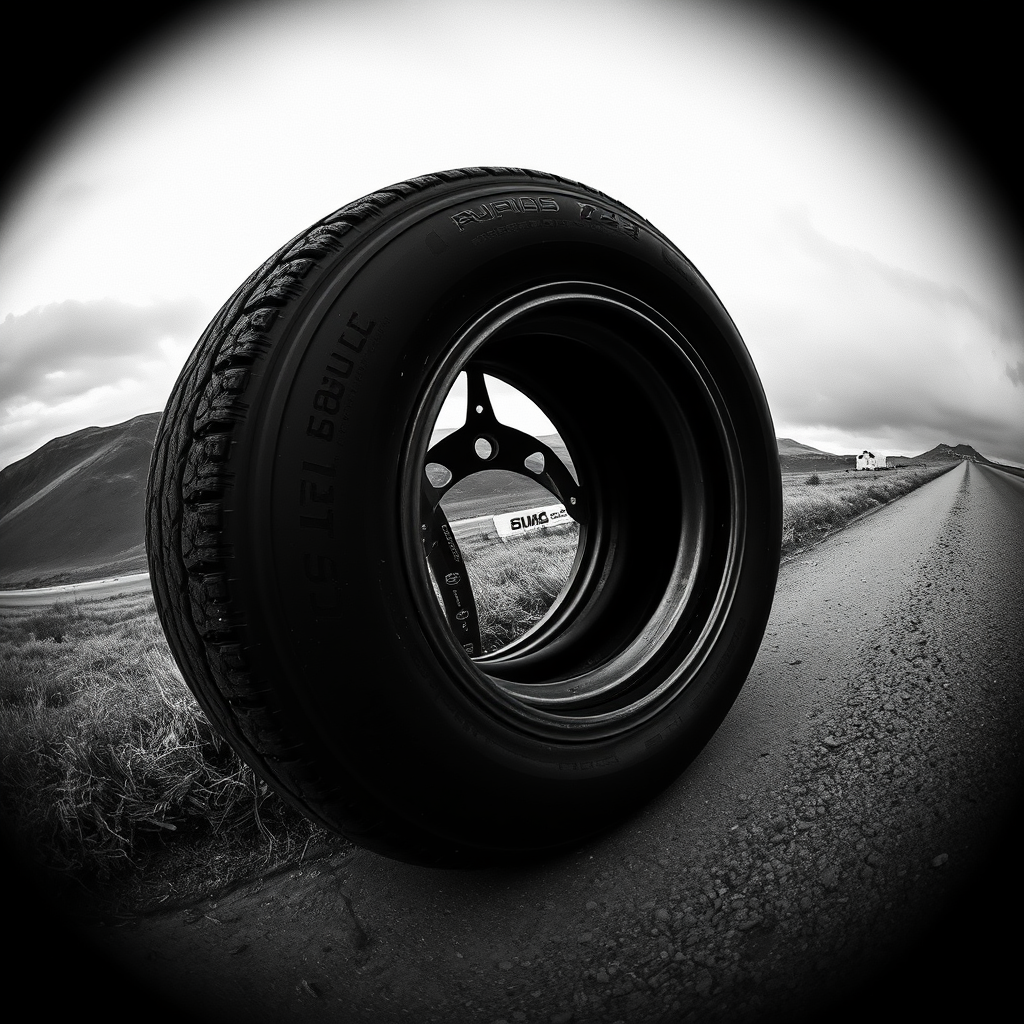
The Race – Endurance, Strategy, and Mental Fortitude
The Bathurst 1000 is not won by speed alone — it is a test of endurance, strategy, and mental resilience. Drivers must complete 1000 kilometers across 161 laps, often sharing the car with a co-driver. Regulations require each co-driver to complete at least 37% of the race distance, ensuring balanced participation. Pit strategy is crucial, with teams managing tire wear, fuel consumption, and driver fatigue. Safety cars, weather changes, and mechanical issues can alter race dynamics in seconds. Engineers monitor telemetry data in real time to adjust tactics and diagnose problems.
The race typically lasts over six hours, with drivers experiencing physical strain from heat, g-forces, and concentration. Mistakes are costly — a single error at The Dipper or Forrest’s Elbow can end a campaign instantly. Victory requires not just a fast car, but a cohesive team, reliable equipment, and strategic foresight. The Peter Brock Trophy is awarded to the winners, symbolizing mastery of Australia’s toughest race. Bathurst is known for dramatic finishes, last-lap battles, and emotional triumphs. It is a race where legends are made, and reputations are forged under pressure.
Table – Bathurst 1000 Race Metrics
| Metric | Value |
|---|---|
| Total Distance | 1000.29 km |
| Number of Laps | 161 |
| Circuit Length | 6.213 km |
| Elevation Change | 174 meters |
| Fastest Section | Conrod Straight (300 km/h) |
| Average Race Duration | 6 hours |
| Number of Corners | 23 |
| Co-driver Requirement | Minimum 37% of race distance |
| Fuel Tank Capacity | 118 liters |
| Tire Sets Allowed | Varies by team strategy |
The Legacy – Cultural Impact and National Identity
Bathurst is more than a race — it is a cultural institution woven into Australia’s sporting identity. Every October, fans gather on the mountain, in pubs, and around televisions to witness The Great Race. The event rivals the Melbourne Cup in national viewership and emotional investment. Peter Brock’s legacy continues to inspire generations of drivers and fans alike. The Ford vs Holden rivalry shaped decades of brand loyalty and tribal passion. Bathurst has produced iconic moments — from last-lap overtakes to heartbreaking mechanical failures.
The race has also evolved with the times, embracing new manufacturers, safety standards, and broadcast technologies. Local businesses benefit from the influx of tourism, while the city of Bathurst transforms into a motorsport hub. The event fosters community, tradition, and storytelling — with fans passing down memories across generations. Bathurst’s endurance format has influenced other races globally, including the Nürburgring 24 Hours and Daytona. The Peter Brock Trophy is not just a prize — it is a symbol of excellence, resilience, and national pride. Bathurst remains the ultimate proving ground for Australian motorsport.
The Drivers – Skill, Preparation, and Psychological Demands
Competing at Bathurst requires more than technical skill — it demands psychological endurance and strategic intelligence. Drivers undergo rigorous physical training to withstand heat, vibration, and sustained concentration. Mental preparation includes visualization, data analysis, and simulator sessions. Co-driver chemistry is essential, with seamless handovers and shared tactical understanding. Bathurst veterans often outperform rookies due to their familiarity with the circuit’s nuances. Drivers must adapt to changing grip levels, tire degradation, and evolving race conditions. Communication with engineers is constant, with feedback loops guiding setup adjustments and pit strategy.
The psychological toll of Bathurst is immense — drivers must manage pressure, fatigue, and the fear of failure. Mistakes are magnified by the track’s unforgiving layout and national spotlight. Winning Bathurst elevates a driver’s career, while poor performance can haunt reputations. The race has seen emotional victories, comeback stories, and moments of redemption. Preparation begins months in advance, with physical conditioning, media obligations, and technical briefings. Bathurst rewards those who combine talent with discipline, courage, and mental clarity.
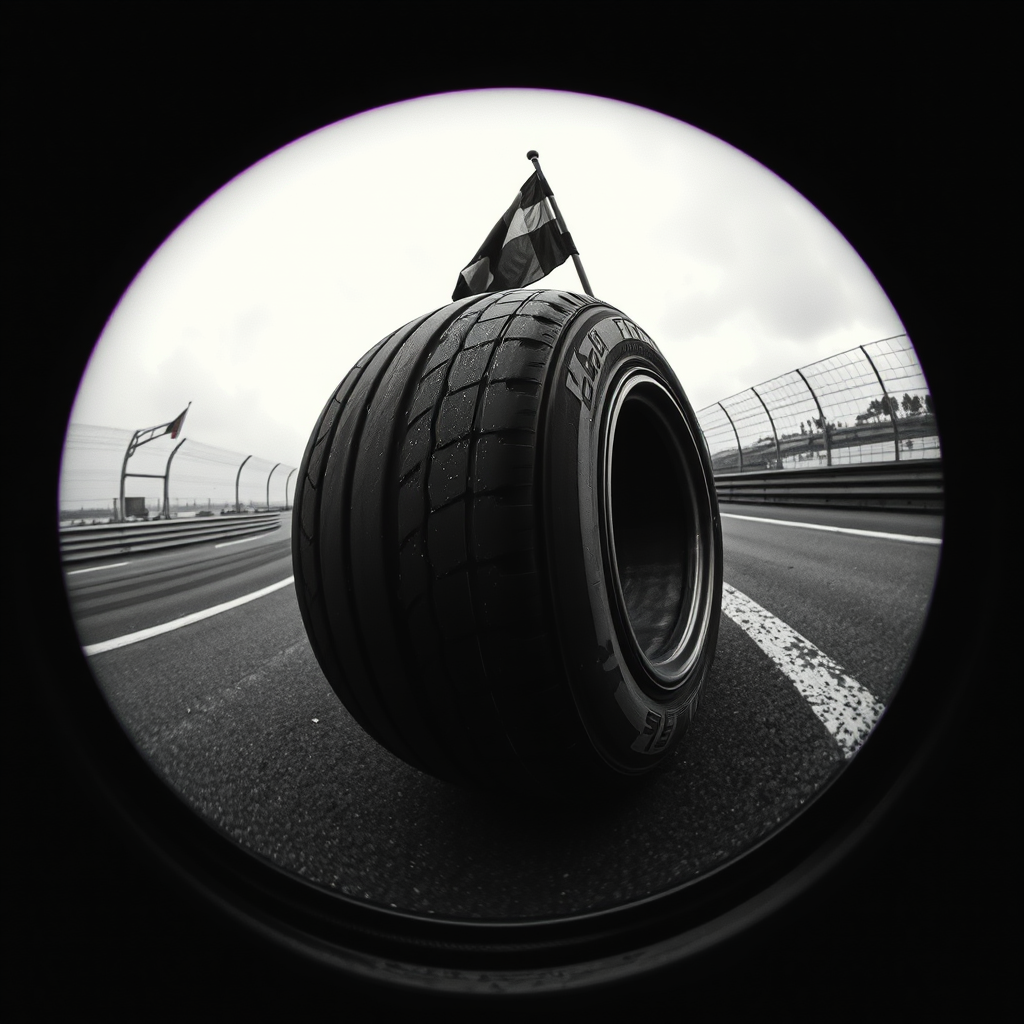
Controversy and Culture – Midnight Oil, Politics, and the Bathurst Divide
Bathurst has never been immune to controversy — on and off the track. From technical protests to political flashpoints, the race has often mirrored Australia’s broader tensions. One of the most symbolic moments came in 1987, when Midnight Oil performed “Beds Are Burning” at the Bathurst concert stage. The song, a protest anthem about Indigenous land rights, clashed with the race’s traditionally conservative, petrol-fueled culture. Some fans embraced the message; others booed, sparking debate about politics in sport. Midnight Oil’s presence marked a turning point — Bathurst was no longer just about engines, but about identity. The race has also seen controversies over fuel irregularities, driver eligibility, and team orders.
In 1992, the race was red-flagged due to rain, leading to confusion over the winner and a famously heated podium exchange. Safety car deployments, pit lane penalties, and broadcast bias have all sparked fan outrage over the years. The Ford vs Holden divide itself has occasionally boiled over into tribal hostility. Yet these controversies have only deepened Bathurst’s mythology — proving that the mountain is not just a circuit, but a crucible of national emotion. Bathurst doesn’t shy away from tension; it absorbs it, transforms it, and races on.
King of the Mountain – The Legacy of Peter Brock
Peter Brock is more than a Bathurst legend — he is its spiritual architect. With nine victories between 1972 and 1987, Brock became the embodiment of endurance, elegance, and emotional connection. His driving style was smooth yet aggressive, his public persona humble yet magnetic. Brock’s technical understanding of car setup and race strategy set him apart from his peers. He was a master of Mount Panorama’s rhythm — knowing when to push, when to conserve, and when to trust the mountain. His partnership with Holden cemented the brand’s dominance and created a loyal fan base that still chants his name.
Brock’s death in 2006 during a rally event shocked the nation and cast a long shadow over Bathurst. The Peter Brock Trophy, introduced that same year, became the race’s ultimate symbol of excellence. Drivers who lift it speak of Brock’s legacy as a guiding force. His influence extends beyond racing — into engineering, mentorship, and national identity. Brock wasn’t just a driver; he was a storyteller, a teacher, and a mirror of Australia’s sporting soul. Bathurst may have many champions, but it will only ever have one King of the Mountain.
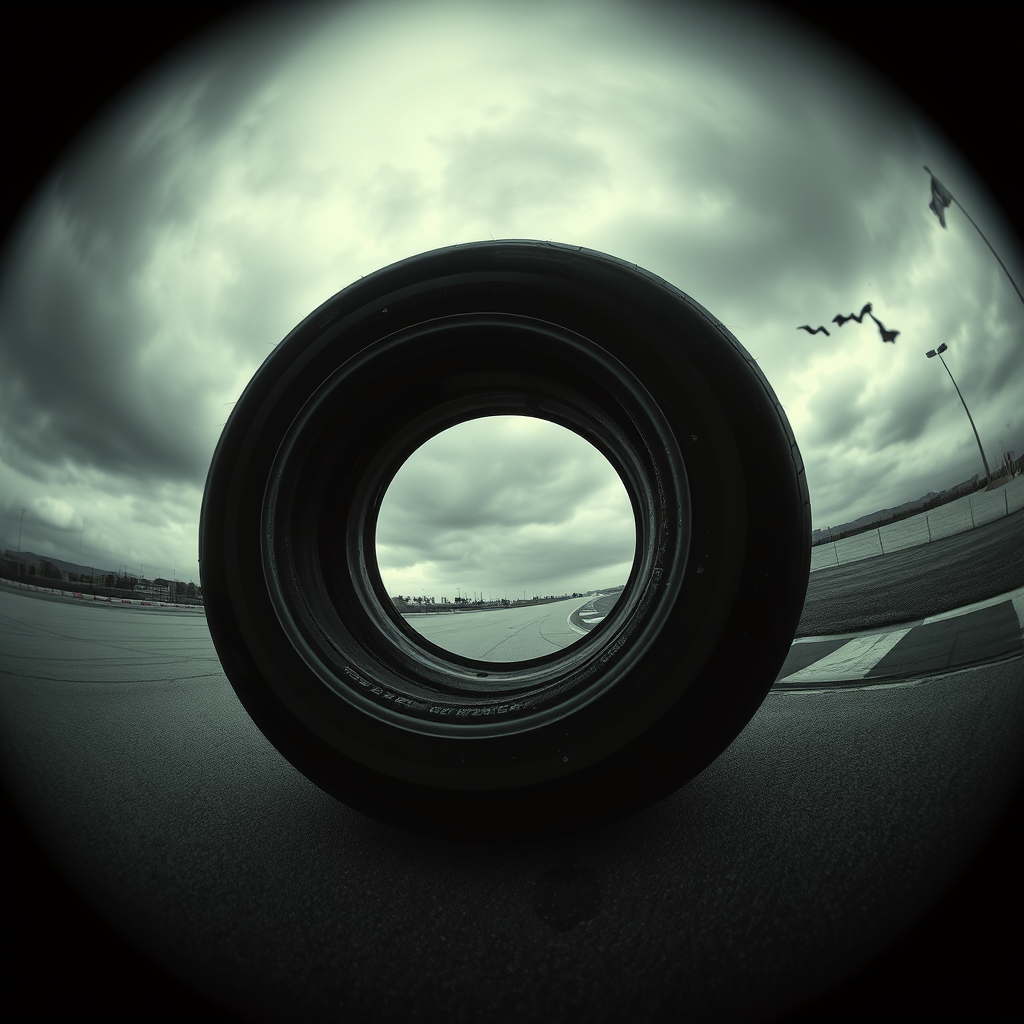
Tribal Warfare – The Ford vs Holden Rivalry
No rivalry in Australian sport matches the tribal intensity of Ford vs Holden at Bathurst. It’s more than brand loyalty — it’s cultural identity, passed down through generations like family folklore. Holden fans wear red, chant Brock’s name, and celebrate the Commodore as a national icon. Ford supporters fly blue flags, idolize Dick Johnson and Craig Lowndes, and swear by the Falcon’s legacy. The rivalry has shaped liveries, merchandise, and even driver transfers — with fans reacting emotionally to any brand crossover. On-track battles between the two marques have produced some of Bathurst’s most dramatic moments: last-lap duels, pit lane mind games, and controversial collisions.
The rivalry peaked in the 1990s and early 2000s, when Holden’s dominance was challenged by Ford’s resurgence. Even after Holden’s retirement from manufacturing in 2020, the tribalism persists — now symbolized through legacy liveries and fan nostalgia. The Ford vs Holden divide isn’t just about cars; it’s about class, geography, and generational pride. Bathurst gave this rivalry a stage, a soundtrack, and a soul. And every October, the mountain becomes a battlefield — not of hatred, but of heritage.
The Mini Miracle – 1966 and the Power of Precision
In 1966, the Bathurst 500 witnessed one of its most iconic underdog victories — the triumph of the Morris Cooper S. Against a field of larger, more powerful cars, the tiny Mini defied expectations with surgical precision and relentless consistency. Driven by Bob Holden and Rauno Aaltonen, the Mini didn’t win by brute force, but by strategic brilliance. Its lightweight frame, nimble handling, and fuel efficiency allowed it to outlast and outmaneuver the competition. The win shocked the motorsport world and proved that Bathurst wasn’t just about horsepower — it was about endurance, intelligence, and adaptability.
The Mini’s victory became a symbol of egalitarian racing, where smart driving could beat raw speed. Fans still speak of the 1966 race as a turning point — the moment Bathurst became a thinking man’s race. The image of the tiny Cooper S climbing the mountain, dwarfed by muscle cars, remains etched in Australian motorsport history. Bob Holden’s name became synonymous with precision and perseverance. The win also elevated the Mini’s status in Australia, turning it from a city car into a racing legend. Bathurst never forgot the lesson: size doesn’t matter — strategy does.
Unforgettable Moments That Shaped Bathurst
Bathurst is a race built on moments — flashes of brilliance, heartbreak, and pure theatre that transcend statistics. In 1984, Dick Johnson’s Falcon tangled with a rock thrown onto the track, sparking national outrage and a flood of public donations to rebuild his car. In 1992, Jim Richards and Mark Skaife won in torrential rain, only to be booed on the podium — prompting Richards’ infamous “You’re a pack of arseholes” speech that became folklore. The 2006 race saw Craig Lowndes win the first Peter Brock Trophy just weeks after Brock’s death, a victory soaked in emotion and tribute. In 2014, Chaz Mostert charged from last on the grid to first, winning in a car that had started from pit lane — a feat never before achieved.
The 2017 finish between David Reynolds and Scott McLaughlin was a masterclass in defensive driving and strategic tension. In 2019, Shane van Gisbergen and Garth Tander’s late-race duel with Jamie Whincup and Craig Lowndes kept fans on edge for the final 20 laps. The 2020 race, held without full crowds due to COVID-19, felt eerily quiet — yet symbolically powerful, proving Bathurst’s resilience. In 2022, Kostecki’s near-miss and Mostert’s comeback created a new chapter in Bathurst’s book of drama. Each year, the mountain delivers something unexpected — a crash, a comeback, a quote that lives forever. These moments aren’t just highlights; they’re emotional architecture. Bathurst doesn’t just record history — it creates it, one lap at a time.
Out of Fuel, Not Out of Heart – Pushing to the Finish
Few images capture Bathurst’s brutality and beauty like a driver pushing their car across the finish line. It’s the ultimate act of defiance — when fuel runs dry, but the will to finish burns hotter than any engine. In 1983, Allan Grice famously coasted to the line with fumes in the tank, barely making it before collapsing from exhaustion. In 1986, George Fury’s Nissan ran dry on Conrod Straight, forcing his team to sprint and push the car into pit lane — a moment that became symbolic of Bathurst’s unpredictability.
In 1997, Paul Morris and Tony Longhurst’s BMW faltered just before the finish, and Morris physically pushed the car across the line to secure a class win. These moments are rare, but unforgettable — reminders that Bathurst is not just about horsepower, but heart. Drivers train for heat, speed, and strategy — but nothing prepares them for the humiliation and heroism of pushing a dead car uphill.
Fans cheer louder for these efforts than for clean victories, sensing the desperation and dignity in every step. Mechanics watch helplessly, knowing the car gave everything it could. Commentators fall silent, then erupt — narrating not just a finish, but a fight for legacy. Bathurst’s fuel dramas have led to rule changes, fuel cell redesigns, and tighter telemetry protocols. Yet the image of a driver pushing their car remains iconic. It’s Bathurst distilled: brutal, beautiful, and utterly human.
Engineering Precision – Building a Car for Bathurst
Designing a Supercar for Bathurst requires a balance of speed, durability, and adaptability. The cars are built to Supercars Championship specifications, featuring a 5.0-liter V8 engine producing over 600 horsepower. Aerodynamics are tuned for both downforce and drag reduction, with front splitters and rear wings optimized for Mount Panorama’s elevation shifts. Brake systems are reinforced to withstand repeated deceleration from 300 km/h at The Chase. Suspension setups are adjusted for the track’s uneven surface, especially through The Dipper and Forrest’s Elbow. Gear ratios are selected to maximize acceleration on Mountain Straight and Conrod Straight.
Cooling systems are critical, as ambient temperatures and sustained engine load can cause overheating. Teams use simulation software to model fuel burn, tire degradation, and lap-time deltas. Chassis rigidity and weight distribution affect cornering stability and tire wear. Engineers monitor telemetry in real time to detect anomalies and adjust strategy. Every component — from wheel nuts to ECU mapping — is tested under race conditions. Bathurst engineering is not just about building fast cars; it’s about building cars that survive.
Fan Culture – The Mountain as a Motorsport Pilgrimage
Bathurst is more than a race — it’s a ritual for motorsport fans across Australia. Thousands camp on the mountain days before the event, creating a temporary city of tents, caravans, and fire pits. The top of the mountain, known as “The Hill,” is famous for its rowdy atmosphere and passionate supporters. Fans decorate their campsites with team flags, memorabilia, and homemade tributes to Peter Brock. The event blends hardcore racing enthusiasts with families, first-timers, and international visitors. Traditions include the Friday night convoy, pit lane walks, and the Sunday morning anthem.
Many fans have attended for decades, passing down stories and rituals across generations. The race is broadcast live on television and radio, with commentary becoming part of the national soundtrack. Social media amplifies fan engagement, with live updates, memes, and behind-the-scenes footage. Merchandise sales spike during race week, with limited-edition gear selling out quickly. Bathurst’s fan culture is tribal, inclusive, and deeply emotional. It transforms Mount Panorama into a living museum of Australian motorsport.
Spectator Experience at Bathurst
| Element | Description | Impact on Culture |
|---|---|---|
| Camping on The Hill | Fans set up tents and caravans days before the race | Creates tribal atmosphere and tradition |
| Fan Zones | Interactive areas with simulators, merchandise, and food | Enhances engagement and family appeal |
| Autograph Sessions | Drivers meet fans, sign posters, and take photos | Builds emotional connection |
| Commentary Voices | Crompton, Skaife, Yates narrate race with insight | Shapes national memory and drama |
| Local Hospitality | Pubs, cafes, and shops extend hours and stock merchandise | Boosts economy and civic pride |
| Community Events | Fundraisers, school visits, and cultural showcases | Deepens local involvement |
| Social Media Engagement | Live updates, memes, and fan reactions | Amplifies reach and real-time dialogue |
| Generational Attendance | Families pass down race traditions | Sustains legacy and emotional depth |
Media and Broadcast – Telling the Story of The Great Race
The Bathurst 1000 is one of the most extensively covered sporting events in Australia. Broadcast teams deploy over 100 cameras, including drones, onboards, and trackside rigs. Commentary booths feature veteran analysts, former drivers, and technical experts. Live telemetry and pit communications are integrated into the broadcast feed for real-time insight. The race is streamed globally, with coverage reaching millions across Asia, Europe, and North America. Pre-race shows include driver interviews, historical retrospectives, and technical breakdowns.
Post-race analysis dissects strategy, incidents, and standout performances. Media crews work around the clock to capture every angle, emotion, and turning point. Social media platforms provide instant highlights, fan reactions, and interactive polls. Print and digital outlets publish race previews, driver profiles, and engineering deep-dives. Bathurst’s media presence elevates the race from a national event to an international spectacle. The storytelling is as important as the racing — it builds legacy, drama, and connection. Every lap is documented, archived, and remembered.
Bathurst Commentary and Broadcast Elements
| Element | Role in Coverage | Viewer Impact |
|---|---|---|
| Lead Commentators | Narrate race action and provide historical context | Builds emotional and technical depth |
| Technical Analysts | Explain strategy, telemetry, and car performance | Enhances understanding and engagement |
| Onboard Cameras | Show driver perspective and cockpit dynamics | Immerses viewers in race experience |
| Drone Footage | Captures aerial views of circuit and crowd | Adds cinematic scale |
| Pit Lane Reporters | Deliver updates on strategy, repairs, and driver changes | Keeps viewers informed in real time |
| Fan Interviews | Showcase spectator emotion and tradition | Humanizes the event |
| Live Telemetry Graphics | Display speed, tire wear, and fuel data | Supports strategic storytelling |
| Archival Clips | Replay historic moments and rivalries | Connects past and present |
Safety and Risk – Managing the Mountain’s Danger
Mount Panorama is beautiful but brutal — safety is a constant priority. The circuit’s elevation changes and blind corners increase the risk of high-speed accidents. Safety barriers, tire walls, and catch fencing are installed at critical points. Medical teams include trauma specialists, paramedics, and rapid response vehicles. The race uses a multi-tiered flag system to manage incidents and track conditions.
Safety cars are deployed to neutralize the field during recovery operations. Drivers wear fireproof suits, HANS devices, and helmets rated to FIA standards. Cars are equipped with roll cages, fuel cell bladders, and onboard extinguishers. Race control monitors every sector via CCTV and telemetry. Marshals are trained to respond within seconds to crashes, fires, or mechanical failures. Weather conditions — especially rain and fog — can dramatically increase risk. Bathurst’s safety protocols are among the most advanced in touring car racing. The goal is not just to race hard, but to race responsibly.
The Future of Bathurst – Innovation and Evolution
Bathurst continues to evolve, embracing new technologies and expanding its global reach. The introduction of Gen3 Supercars in 2023 marked a shift toward cost reduction and manufacturer diversity. Hybrid powertrains and sustainable fuels are being explored for future seasons. International drivers and wildcard entries bring fresh talent and global attention. Virtual reality and augmented broadcast features enhance fan engagement. The circuit itself may see infrastructure upgrades to improve accessibility and safety.
Bathurst’s legacy is being preserved through digital archives, documentaries, and interactive exhibits. The race remains central to the Supercars Championship calendar, with growing interest from sponsors and media. Youth development programs aim to nurture the next generation of Bathurst champions. Community partnerships ensure the event benefits local businesses and residents. The spirit of Bathurst — endurance, rivalry, and national pride — remains unchanged. Its future is not just secure; it’s expanding.
Legends of the Mountain – Legacy, Dominance, and Defining Moments
The Bathurst 1000 has produced a pantheon of legends whose names are etched into Australian motorsport history. These drivers didn’t just win races — they shaped the culture, elevated the spectacle, and redefined what endurance means. Peter Brock remains the most iconic figure, with nine victories and a legacy that transcends statistics. His mastery of Mount Panorama, combined with his charisma and technical insight, earned him the title “King of the Mountain.” Craig Lowndes followed in Brock’s footsteps, becoming a fan favorite with seven wins and unmatched consistency across decades. Jamie Whincup, known for his precision and strategic brilliance, added four Bathurst wins to his record-breaking Supercars career.
Mark Skaife combined aggression with tactical clarity, securing five victories and influencing car development during the Holden Racing Team era. Larry Perkins, both driver and engineer, won six times and was instrumental in shaping Bathurst’s technical evolution. Dick Johnson, a Ford loyalist, won three times and became a symbol of resilience and working-class grit. More recently, Shane van Gisbergen has emerged as a modern master, blending data-driven racing with fearless execution. Each legend brought a different style — some cerebral, some instinctive, all unforgettable. Their achievements are not just measured in trophies, but in moments: last-lap passes, rain-soaked comebacks, and emotional tributes. Bathurst’s mythology is built on these stories — lived, remembered, and retold every October.
Table – Bathurst Legends and Their Achievements
| Driver | Bathurst Wins | Notable Achievements |
|---|---|---|
| Peter Brock | 9 | Most wins; Peter Brock Trophy named in his honor |
| Craig Lowndes | 7 | Wins across three decades; fan favorite |
| Larry Perkins | 6 | Driver-engineer; known for technical innovation |
| Mark Skaife | 5 | Dominated Holden Racing Team era; strategic brilliance |
| Jamie Whincup | 4 | Supercars record holder; precision and consistency |
| Dick Johnson | 3 | Ford icon; symbol of resilience and grassroots loyalty |
| Shane van Gisbergen | 3 | Modern master; aggressive and data-driven |
| Jim Richards | 7 (including co-driver wins) | Versatile across eras; co-drove with Brock and Skaife |
| Garth Tander | 5 | Long career; known for adaptability and racecraft |
| Steven Richards | 5 | Co-driver specialist; wins with multiple teams |
Bathurst as Ritual – Memory, Myth, and Motorsport
The Bathurst 1000 is more than a race — it’s a ritual of national memory and mechanical myth. Every October, Mount Panorama becomes a stage where engineering, endurance, and emotion collide. Fans return year after year not just for the spectacle, but for the stories — the comeback drives, the heartbreaks, the moments that defy logic. The mountain itself feels alive, shaped by the echoes of Brock’s victories, Lowndes’ charges, and the roar of V8 engines at sunrise. Bathurst is where time stretches — six hours of racing become a lifetime of legend.
The track records not just lap times, but turning points in careers, rivalries, and national identity. Mechanics speak of Bathurst setups in reverent tones, knowing that success here validates years of work. Drivers prepare mentally for months, aware that one mistake can rewrite their legacy. Broadcasters treat the race like a cultural broadcast, narrating not just speed but symbolism. The Peter Brock Trophy is more than metal — it’s a vessel of memory, passed from one generation to the next. Bathurst endures because it evolves, yet never forgets. It is Australia’s motorsport altar — where grit becomes glory, and every lap is a line in the national story.
Economic Engine – The Financial Impact of Bathurst
The Bathurst 1000 generates significant economic activity for the city of Bathurst and the broader New South Wales region. Each year, the event attracts over 200,000 spectators, many of whom stay for multiple days, boosting local accommodation, hospitality, and retail sectors. According to regional tourism reports, the race contributes more than $30 million annually to the local economy. Temporary employment spikes in logistics, security, catering, and event management. Local businesses often report their highest yearly turnover during race week.
The event also drives long-term tourism, with many fans returning to visit Mount Panorama outside race season. Government investment in infrastructure upgrades — including roads, transport, and public amenities — is often tied to the race’s success. Sponsorship deals and broadcast rights generate millions in revenue for Supercars and participating teams. The race also supports regional branding, with Bathurst becoming synonymous with endurance and excellence. Economic benefits extend to motorsport suppliers, engineering firms, and merchandise manufacturers. The Bathurst 1000 is not just a sporting event — it’s a financial catalyst. Its economic footprint is as enduring as its cultural legacy.
Team Chemistry – Behind the Garage Doors
Success at Bathurst depends on more than just the driver — it’s a team sport in every sense. Each car is supported by a crew of engineers, mechanics, strategists, and data analysts. Pit stops are choreographed with military precision, often completed in under 10 seconds. Engineers monitor tire degradation, brake temperatures, and fuel burn in real time. Communication between driver and engineer is constant, with feedback shaping setup changes and strategy.
Co-driver compatibility is critical, as both must adapt to the same car setup and share mental models. Team managers oversee logistics, sponsor obligations, and crisis response. Crew members work 16-hour days during race week, often sleeping in shifts. Trust and cohesion are built over months of preparation and testing. A single misstep — a loose wheel nut, a miscalculated fuel load — can end a campaign. Bathurst rewards teams that operate as one organism, not just a collection of specialists. Behind every podium finish is a garage full of unsung heroes.
Weather and the Mountain – Unpredictability as a Competitor
Mount Panorama’s microclimate is one of the race’s most unpredictable variables. The circuit’s elevation and geography create rapid weather shifts — sunshine on Conrod Straight can coexist with fog at Skyline. Rain often arrives without warning, turning the track into a slippery gauntlet. Teams must constantly monitor radar and adjust tire strategy accordingly. Wet-weather tires, intermediate compounds, and brake bias settings become critical decisions. Visibility can drop to near-zero in fog, forcing drivers to rely on instinct and memory.
Temperature swings affect tire pressure, engine cooling, and grip levels. Some of Bathurst’s most dramatic moments — including surprise crashes and comeback drives — have been shaped by weather. Drivers who excel in changing conditions are often the most successful. Engineers build flexibility into suspension and aero setups to accommodate variability. The mountain doesn’t just test machines — it tests adaptability. At Bathurst, the weather is not a backdrop; it’s a competitor.

Hidden Spirits – The Art of Stashing Alcohol in the Hills
There’s a tradition at Bathurst that’s as cheeky as it is iconic: hiding alcohol in the hills before race weekend. Long before official limits were introduced, fans would bury slabs of beer, stash bottles in hollow logs, or mark secret spots with coded symbols to retrieve their stash once the gates opened. It’s part rebellion, part ritual — a uniquely Australian blend of ingenuity, defiance, and mateship. Some fans arrive weeks early, armed with shovels and GPS coordinates, treating the mountain like a treasure map.
Others pass down hiding spots through generations, like sacred family lore. The practice became so widespread that security teams began using sniffer dogs and ground-penetrating radar to uncover buried booze. Yet even with tighter regulations, the legend lives on — whispered in campsites, joked about in commentary, and immortalized in fan folklore.
It’s not just about drinking — it’s about beating the system with a grin. Bathurst fans see it as a harmless act of Aussie larrikinism, a nod to the bushranger spirit and the DIY ethos that defines the race’s culture. The mountain, after all, isn’t just a circuit — it’s a canvas for creativity, camaraderie, and controlled chaos.
Hiding alcohol in the hills is a story of outsmarting authority, bonding with mates, and turning race week into a personal adventure. It’s the kind of tradition that would feel out of place anywhere else — but at Bathurst, it’s part of the myth. Like Brock’s victories and Holden flags, it’s woven into the mountain’s identity. Bathurst isn’t just a race; it’s a ritual. And sometimes, that ritual includes a shovel, a six-pack, and a well-placed patch of dirt.
National Shift – How Bathurst Changed Australia and Australian Sport
The Bathurst 1000 has reshaped Australia’s sporting landscape in ways few events can claim. It elevated motorsport from niche pastime to national ritual, drawing millions of viewers and embedding itself in the cultural calendar alongside the AFL Grand Final and Melbourne Cup. Bathurst gave Australia its own mythology of speed — a homegrown epic that didn’t rely on European circuits or American formats.
It created icons like Peter Brock and Craig Lowndes, whose names became synonymous with resilience, rivalry, and national pride. The race also democratized sport, attracting fans from rural towns, urban centers, and every socioeconomic background. It blurred the lines between engineering and athleticism, showing that sport could be mechanical, strategic, and deeply emotional. Bathurst influenced how Australians talk about grit, teamwork, and legacy — not just in motorsport, but across disciplines.
Its endurance format inspired similar approaches in cycling, sailing, and even cricket’s multi-day tests. The race also helped normalize co-driver formats, technical commentary, and fan-led storytelling. Bathurst’s tribalism — Ford vs Holden — mirrored the passion of rugby league and AFL rivalries, but with a mechanical twist. It gave regional Australia a global stage, proving that world-class sport didn’t need to be urban. Bathurst changed how Australia sees itself: fast, fearless, and fiercely loyal.
Table – Bathurst’s Impact on Australian Sport and Culture
| Domain | Transformation | Lasting Effect |
|---|---|---|
| National Identity | Elevated motorsport to cultural institution | Bathurst as annual ritual |
| Athlete Archetypes | Created mechanical heroes (Brock, Lowndes) | Expanded definition of sporting icons |
| Regional Representation | Gave rural Australia a global sporting platform | Boosted civic pride and tourism |
| Fan Culture | Introduced tribalism and generational loyalty | Strengthened community storytelling |
| Broadcast Innovation | Pioneered technical commentary and telemetry graphics | Influenced AFL, NRL, and cricket coverage |
| Endurance Format | Popularized long-form competition | Inspired formats in sailing and cycling |
| Engineering in Sport | Linked mechanical mastery with athletic performance | Broadened definition of sporting excellence |
| Legacy and Ritual | Created multi-generational traditions | Cemented Bathurst in national memory |
Global Influence – Bathurst’s Impact on International Motorsport
Bathurst’s influence extends far beyond Australia’s borders — it has quietly reshaped global motorsport. The race introduced a hybrid format that blends street circuit danger with endurance strategy, inspiring events like the Macau Grand Prix and Suzuka 10 Hours. Its elevation changes and technical layout have been studied by engineers designing circuits in Asia, Europe, and the Middle East. Bathurst’s co-driver model influenced endurance racing formats worldwide, including GT3 and touring car championships. The race’s broadcast style — combining emotional storytelling with real-time telemetry — has become a template for modern motorsport coverage. International drivers who’ve raced at Bathurst often describe it as more demanding than Le Mans or Daytona, citing its unforgiving terrain and tribal fan energy. Bathurst also helped normalize the idea of national races with global reach — events that retain local identity while attracting international talent. Its engineering demands have influenced car design, especially in suspension, cooling, and brake systems. Bathurst’s fan culture — passionate, generational, and deeply loyal — has inspired similar communities in Japan, Germany, and Brazil. The race has become a benchmark for what motorsport can be: emotional, technical, and culturally rich. Bathurst didn’t just evolve with global motorsport — it helped redefine it.
Table – Bathurst’s Global Motorsport Influence
| Element | Global Impact | Example or Outcome |
|---|---|---|
| Circuit Design | Inspired elevation-based layouts | Macau GP, Portimão, Suzuka |
| Co-driver Format | Normalized shared driving roles | GT3 endurance, WEC, IMSA |
| Broadcast Style | Combined telemetry with emotional narrative | Adopted by F1, Formula E, WEC |
| Engineering Standards | Influenced suspension and brake design | Applied in touring and GT cars |
| Fan Culture | Inspired tribal, generational fan bases | Seen in Super GT, DTM, Stock Car Brasil |
| International Prestige | Attracted global talent and wildcard entries | Drivers from F1, IndyCar, WEC |
| Hybrid Format | Blended street circuit danger with endurance strategy | Modeled in Suzuka 10 Hours, Dubai 24 |
| Cultural Benchmark | Redefined what national motorsport can achieve globally | Bathurst as blueprint for legacy racing |
Global Benchmarks – Bathurst in the World of Endurance Racing
While Bathurst is uniquely Australian, it stands shoulder to shoulder with the world’s great endurance races. Events like the 24 Hours of Le Mans, Nürburgring 24, and Daytona 500 share Bathurst’s emphasis on stamina, strategy, and spectacle. Unlike Le Mans, Bathurst is a single-day sprint over 1000 kilometers, not a 24-hour marathon. Its street-circuit nature makes it more dangerous and less forgiving than purpose-built tracks. The elevation change at Mount Panorama rivals that of Spa-Francorchamps in Belgium. Bathurst’s average lap speed is lower than Daytona but higher than most GT endurance events. International drivers often describe it as one of the most challenging circuits they’ve ever raced. The race has attracted global talent, including drivers from Formula 1, IndyCar, and the World Endurance Championship. Bathurst’s broadcast reach now spans Europe, Asia, and the Americas. Its reputation as a “bucket list” event continues to grow. While it may not match Le Mans in duration, Bathurst matches — and often exceeds — it in intensity. It is Australia’s contribution to the global language of motorsport.
Bathurst’s Cultural Layers
| Cultural Layer | Description | Symbolic Role |
|---|---|---|
| Indigenous Heritage | Wiradjuri name “Wahluu” and cultural significance | Anchors race in ancient tradition |
| Automotive Rivalry | Ford vs. Holden tribalism | Fuels passion and identity |
| Volunteerism | Multi-generational service and civic pride | Sustains race infrastructure |
| Fan Rituals | Camping, chants, memorabilia, and storytelling | Builds emotional continuity |
| Broadcast Voices | Iconic commentators narrating drama and legacy | Shapes national memory |
| Junior Engagement | Youth programs, school visits, and family zones | Secures future of the sport |
| Local Economy | Business growth and tourism tied to race | Embeds race in civic identity |
| National Mythology | Bathurst as symbol of endurance and excellence | Elevates race to cultural institution |
Women at the Wheel – Gender Representation at Bathurst
Women have a long but underrepresented history at the Bathurst 1000. The first female driver to compete was Margaret Hardy in 1967, co-driving a Morris Mini Deluxe. Since then, only a handful of women have raced at Bathurst, including Christine Gibson, Leanne Tander, and Simona de Silvestro. De Silvestro became the first full-time female Supercars driver in 2017 and competed at Bathurst multiple times. Despite their limited numbers, female drivers have consistently demonstrated skill, resilience, and professionalism. Barriers to entry include sponsorship access, development pathways, and cultural bias. Initiatives like the FIA’s Girls on Track and Supercars’ diversity programs aim to change this landscape. Female engineers, mechanics, and strategists are also increasingly visible in pit lanes. Representation matters — young girls watching Bathurst need to see themselves reflected on the grid. The sport is slowly evolving, but progress remains uneven. Bathurst’s future will be stronger with broader inclusion. The mountain has room for every kind of racer.
Indigenous Engagement – Honoring Country and Culture
Mount Panorama is known in Wiradjuri language as Wahluu, meaning “to watch over.” The land holds deep cultural significance for the Wiradjuri people, who have lived in the region for tens of thousands of years. In recent years, efforts have been made to acknowledge and honor this heritage during race week. Welcome to Country ceremonies, Indigenous flags, and cultural performances are now part of the official program. Some teams have incorporated Indigenous artwork into their liveries as a gesture of respect. Educational signage and community partnerships aim to deepen public understanding of the land’s history. Indigenous drivers and crew remain underrepresented, but pathways are beginning to emerge. Motorsport Australia has partnered with Indigenous organizations to support youth development and access. The Bathurst Regional Council has also worked to include Wiradjuri voices in planning and storytelling. Recognizing the cultural layers of Mount Panorama enriches the race’s meaning. Bathurst is not just a track — it’s sacred ground. Honoring its full history is essential to its future.
Sustainability and the Future of Racing
As global motorsport faces pressure to reduce its environmental impact, Bathurst is beginning to adapt. Supercars has committed to introducing sustainable fuels and exploring hybrid technologies in future seasons. Waste reduction initiatives, including recycling stations and compostable packaging, are now standard at the event. Teams are experimenting with energy-efficient transport and pit equipment. The city of Bathurst has implemented water-saving measures and public transport incentives for fans. Carbon offset programs are being explored in partnership with environmental organizations. The challenge lies in balancing tradition with innovation — preserving the roar of V8s while reducing emissions. Some fans resist change, fearing a loss of identity. Others see sustainability as essential to the race’s survival. Education campaigns during race week aim to shift perceptions and build support. Bathurst’s natural beauty — its hills, trees, and skies — is part of its appeal. Protecting that environment is not a side issue; it’s central to the race’s legacy.
Sponsorship and Commercial Evolution
Sponsorship has always been a lifeline for the Bathurst 1000. From the early days of Armstrong and Hardie-Ferodo to today’s title sponsor Repco, commercial partnerships have shaped the race’s identity. Liveries, team names, and even corner names reflect sponsor influence. The race offers brands exposure to millions of viewers across TV, streaming, and social media. Automotive, energy, and beverage companies dominate the sponsorship landscape. In recent years, tech firms, betting companies, and lifestyle brands have entered the fold. Sponsorship dollars fund team operations, driver salaries, and event logistics. Naming rights deals are negotiated years in advance and often include hospitality, signage, and digital integration. Sponsors also activate on-site with fan zones, giveaways, and branded experiences. The commercial ecosystem around Bathurst is sophisticated and competitive. As media consumption shifts, sponsors are investing more in digital storytelling and influencer partnerships. Bathurst remains a premium platform for brand alignment with endurance, performance, and national pride.
Innovation Under Pressure – Technology at the Limit
Bathurst is a crucible for motorsport innovation. Teams use the race to test new components, software, and strategies under extreme conditions. Data acquisition systems collect thousands of data points per lap, from tire temperature to throttle position. Engineers use this data to refine setups, predict failures, and optimize performance. Radio communication is encrypted and multi-channel, allowing simultaneous strategy, safety, and telemetry updates. Pit crews use torque-limiting guns, laser alignment tools, and real-time diagnostics. Some teams deploy AI-assisted analytics to model race scenarios and fuel windows. Driver biometrics — including heart rate and hydration — are monitored to manage fatigue. Simulation software allows teams to rehearse pit stops and race strategy before arriving at the track. Innovations developed at Bathurst often influence broader Supercars regulations and road car technology. The race is not just a test of endurance — it’s a laboratory of speed. Every second gained is the result of thousands of hours of technical refinement. Bathurst pushes the limits of what’s possible.
Why Bathurst Is So Aussie – Grit, Ritual, and National Character
The Bathurst 1000 isn’t just Australia’s greatest race — it’s a mirror of the nation’s soul. It blends grit, mateship, rebellion, and ritual in a way no other sporting event can. From the tribal Ford vs Holden divide to the tradition of hiding beer in the hills, Bathurst pulses with a uniquely Australian energy. It’s egalitarian — fans from all walks of life camp side by side, sharing stories, sausages, and stubby holders. It’s rebellious — the race has always attracted larrikins, bush mechanics, and fans who bend the rules with a grin. It’s resilient — held through rain, fire bans, pandemics, and political shifts, Bathurst never backs down. The mountain itself feels sacred, like a sporting Dreamtime — where legends are born, and stories are passed down like folklore.
Bathurst celebrates ingenuity, with drivers and teams often improvising repairs mid-race using zip ties, duct tape, and sheer willpower. It’s loud, proud, and unpretentious — where commentary mixes technical jargon with dry Aussie wit, and fans cheer just as hard for a last-place finish as a podium. The race honors legacy, with tributes to Peter Brock, Indigenous heritage, and multi-generational volunteers. It’s a place where kids learn to love engines, where dads teach daughters how to read lap times, and where strangers become mates over a shared love of speed. Bathurst is not just a motorsport event — it’s a national ritual, a cultural campfire, and a celebration of everything that makes Australia tick. If the AFL Grand Final is tribal, and the Melbourne Cup is elegant, Bathurst is raw, real, and roaring. It’s the most Aussie race there is — because it doesn’t just reflect the country. It is the country.
Why Bathurst Is Uniquely Australian
| Aussie Element | Bathurst Expression | Cultural Meaning |
|---|---|---|
| Mateship | Campsites, shared gear, fan camaraderie | Community over competition |
| Larrikinism | Hidden alcohol, cheeky chants, DIY hacks | Rebellion with a grin |
| Grit and Endurance | 1000 km of racing, pushing cars to the line | Toughness as national pride |
| Tribal Loyalty | Ford vs Holden divide | Identity through rivalry |
| Egalitarianism | Fans from all backgrounds sharing the mountain | Everyone gets a seat at the campfire |
| Storytelling | Commentary, folklore, and fan legends | Oral tradition meets motorsport |
| Improvisation | Zip-tie repairs, last-minute strategy shifts | Aussie ingenuity under pressure |
| Legacy and Ritual | Peter Brock tributes, multi-gen volunteers | Respect for history and continuity |
| Dry Humor | Commentary tone, fan banter | Wit as emotional ballast |
| Connection to Land | Mount Panorama as sacred ground | Sport rooted in geography and spirit |
After the Flag – The Emotional Cost of Glory
Crossing the finish line at Bathurst is not just the end of a race — it’s the culmination of months, sometimes years, of sacrifice. For the winners, the moment is euphoric: a release of pressure, pride, and disbelief. Drivers often cry, scream, or collapse in the cockpit, overwhelmed by the magnitude of what they’ve achieved. Mechanics hug, engineers exhale, and team principals allow themselves a rare moment of vulnerability. The Peter Brock Trophy is lifted with reverence, not just as a symbol of victory, but of survival. For those who fall short — through mechanical failure, a late crash, or a strategic misstep — the pain is visceral. Some sit in silence, staring at the timing screen, replaying every decision. Others walk the pit lane in disbelief, knowing how close they came to immortality. Bathurst doesn’t just crown champions — it exposes character. The mountain gives nothing for free, and every triumph is earned through risk, resilience, and resolve. Whether you win or lose, Bathurst changes you. It becomes part of your story — a scar, a badge, a memory that never fades.
The Human Engine – Spectators, Storytellers, and the City of Bathurst
Bathurst is not just a racetrack — it’s a living organism powered by people. Every October, the city transforms into a motorsport epicenter, hosting over 200,000 spectators who arrive in caravans, convoys, and campervans. Locals prepare months in advance, stocking shelves, staffing venues, and welcoming fans with pride and hospitality. For many residents, the race is both a logistical challenge and a cultural celebration — a week where their streets become sacred ground. The influx of visitors boosts the local economy, with hotels, restaurants, and shops operating at full capacity. Community groups run fundraisers, pop-up stalls, and cultural events alongside the race, turning Bathurst into a festival of speed and spirit. Spectators bring tribal energy, waving Ford and Holden flags, wearing vintage liveries, and sharing stories passed down through generations. The top of the mountain becomes a temporary city — rowdy, passionate, and deeply loyal. Commentators like Neil Crompton and Mark Skaife serve as narrators of national memory, blending technical insight with emotional storytelling. Their voices have become part of the race’s soundtrack, guiding fans through heartbreak, heroism, and history. Bathurst doesn’t just happen in Bathurst — it becomes Bathurst. It reshapes the city’s rhythm, identity, and reputation every year.
The Backbone of the Race – Drivers, Volunteers, and Motorsport’s Evolution
Behind every Bathurst victory is a constellation of human effort — drivers, volunteers, and the quiet revolutionaries who’ve reshaped motorsport. Drivers arrive with months of preparation, physical conditioning, and mental rehearsal. They study telemetry, simulate laps, and build chemistry with co-drivers to ensure seamless handovers. Bathurst demands more than talent — it requires endurance, adaptability, and emotional control. The mountain punishes ego and rewards discipline. Veterans like Craig Lowndes and Shane van Gisbergen speak of Bathurst as a living entity — unpredictable, unforgiving, and unforgettable. Rookie drivers often describe their first laps as overwhelming, a sensory overload of speed, elevation, and expectation. Volunteers are the race’s invisible infrastructure — marshals, medics, pit lane coordinators, and hospitality staff who work long hours for little recognition. Many have served for decades, treating Bathurst as a personal tradition and civic duty. Their precision and professionalism ensure safety, fairness, and continuity. Bathurst has changed the DNA of motorsport — introducing endurance formats, co-driver dynamics, and street circuit engineering to the global conversation. It elevated drivers into national icons, volunteers into guardians of tradition, and fans into co-authors of history.
Volunteer Roles and Responsibilities
| Volunteer Role | Core Duties | Critical Race Function |
|---|---|---|
| Track Marshals | Flagging, incident response, and safety enforcement | Maintains race integrity and safety |
| Medical Support | On-site trauma care and emergency response | Protects driver and spectator welfare |
| Pit Lane Coordinators | Manage pit access, timing, and crew movement | Ensures operational precision |
| Logistics Crew | Set up infrastructure, signage, and equipment | Enables race setup and teardown |
| Hospitality Staff | Serve fans, manage VIP zones, and assist media | Enhances spectator experience |
| Accreditation Officers | Issue passes and verify credentials | Controls access and security |
| Communications Team | Relay updates between race control and volunteers | Facilitates coordination |
| Community Liaisons | Interface with local residents and businesses | Builds trust and civic cooperation |
Economic Engine – The Financial Impact of Bathurst
The Bathurst 1000 generates significant economic activity for the city of Bathurst and the broader New South Wales region. Each year, the event attracts over 200,000 spectators, many of whom stay for multiple days, boosting local accommodation, hospitality, and retail sectors. According to regional tourism reports, the race contributes more than $30 million annually to the local economy. Temporary employment spikes in logistics, security, catering, and event management. Local businesses often report their highest yearly turnover during race week. The event also drives long-term tourism, with many fans returning to visit Mount Panorama outside race season. Government investment in infrastructure upgrades — including roads, transport, and public amenities — is often tied to the race’s success. Sponsorship deals and broadcast rights generate millions in revenue for Supercars and participating teams. The race also supports regional branding, with Bathurst becoming synonymous with endurance and excellence. Economic benefits extend to motorsport suppliers, engineering firms, and merchandise manufacturers. The Bathurst 1000 is not just a sporting event — it’s a financial catalyst. Its economic footprint is as enduring as its cultural legacy.
Bathurst’s Economic Footprint
| Sector | Type of Impact | Estimated Contribution |
|---|---|---|
| Accommodation | Hotel bookings, camping fees, short-term rentals | $10M+ during race week |
| Hospitality | Restaurants, cafes, pubs, and food vendors | $8M+ in local turnover |
| Retail | Merchandise, souvenirs, and general shopping | $5M+ in direct sales |
| Employment | Temporary jobs in logistics, security, and event support | 1,000+ short-term roles |
| Tourism | Long-term visitation and regional branding | Year-round economic uplift |
| Infrastructure | Road upgrades, signage, and public transport | Government investment tied to race |
| Sponsorship | Naming rights, team funding, and brand activation | Millions in corporate revenue |
| Media Rights | Broadcast deals and streaming platforms | Global monetization |
Team Chemistry – Behind the Garage Doors
Success at Bathurst depends on more than just the driver — it’s a team sport in every sense. Each car is supported by a crew of engineers, mechanics, strategists, and data analysts. Pit stops are choreographed with military precision, often completed in under 10 seconds. Engineers monitor tire degradation, brake temperatures, and fuel burn in real time. Communication between driver and engineer is constant, with feedback shaping setup changes and strategy. Co-driver compatibility is critical, as both must adapt to the same car setup and share mental models. Team managers oversee logistics, sponsor obligations, and crisis response. Crew members work 16-hour days during race week, often sleeping in shifts. Trust and cohesion are built over months of preparation and testing. A single misstep — a loose wheel nut, a miscalculated fuel load — can end a campaign. Bathurst rewards teams that operate as one organism, not just a collection of specialists. Behind every podium finish is a garage full of unsung heroes.
Weather and the Mountain – Unpredictability as a Competitor
Mount Panorama’s microclimate is one of the race’s most unpredictable variables. The circuit’s elevation and geography create rapid weather shifts — sunshine on Conrod Straight can coexist with fog at Skyline. Rain often arrives without warning, turning the track into a slippery gauntlet. Teams must constantly monitor radar and adjust tire strategy accordingly. Wet-weather tires, intermediate compounds, and brake bias settings become critical decisions. Visibility can drop to near-zero in fog, forcing drivers to rely on instinct and memory. Temperature swings affect tire pressure, engine cooling, and grip levels. Some of Bathurst’s most dramatic moments — including surprise crashes and comeback drives — have been shaped by weather. Drivers who excel in changing conditions are often the most successful. Engineers build flexibility into suspension and aero setups to accommodate variability. The mountain doesn’t just test machines — it tests adaptability. At Bathurst, the weather is not a backdrop; it’s a competitor.
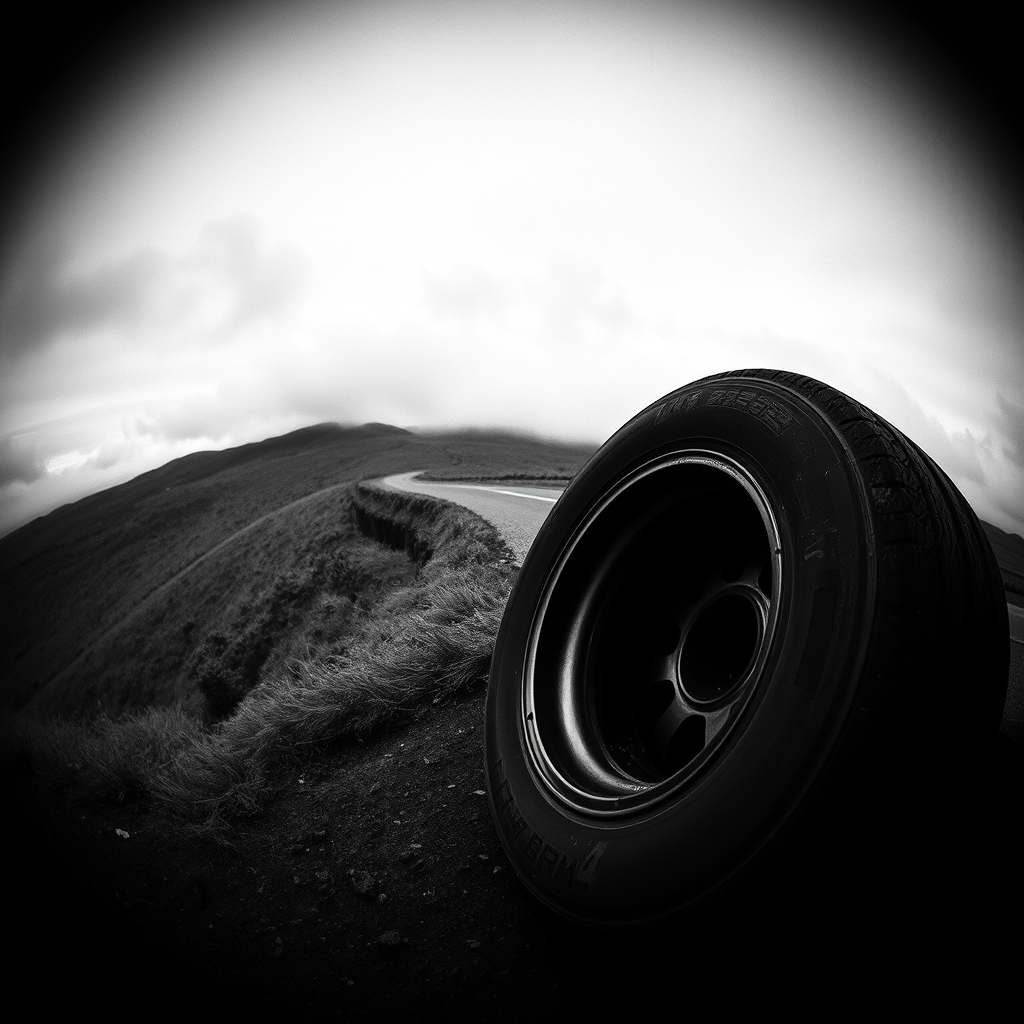
Wild Interruptions – When Nature Joins the Race
Mount Panorama isn’t just a racetrack — it’s a living ecosystem. The circuit winds through bushland, ridgelines, and open paddocks, making wildlife an unpredictable variable in race strategy. Kangaroos are the most notorious intruders, often leaping onto the track mid-race and triggering safety cars or near-misses. Birds, foxes, and even stray dogs have made surprise appearances, forcing drivers to react with split-second precision. In 2004, a kangaroo collided with a car during practice, causing significant damage and sparking debate about fencing and wildlife management. In 2012, a flock of galahs disrupted qualifying, scattering across the circuit and forcing a red flag. Drivers often speak of seeing movement in their peripheral vision — a flash of fur or feathers that could mean disaster. Marshals and wildlife officers patrol the perimeter during race week, but the terrain makes total control impossible. Fans have mixed reactions: some see it as part of Bathurst’s raw charm, others worry about safety and animal welfare. Wildlife incidents have led to improved fencing, motion sensors, and pre-race sweeps, but the mountain remains wild at heart. Bathurst isn’t just a battle between cars — it’s a negotiation with nature. And sometimes, nature doesn’t yield.
Table – Wildlife Incidents at Bathurst
| Year | Animal Involved | Incident Description | Outcome |
|---|---|---|---|
| 1980 | Kangaroo | Collision during warm-up lap | Car damaged, no injuries |
| 2004 | Kangaroo | Hit during practice session | Front-end destroyed, session halted |
| 2012 | Galahs (birds) | Flock disrupted qualifying | Red flag, delay in session |
| 2015 | Fox | Spotted near The Cutting during race | Safety car deployed |
| 2018 | Kangaroo | Near-miss at Skyline | Driver evasive action, no contact |
| 2021 | Stray dog | Entered pit lane area | Removed by marshals, no delay |
| 2023 | Kangaroo | Jumped barrier during night practice | Session paused, animal relocated |
When It Breaks – Bathurst’s Most Brutal Crashes
Bathurst is beautiful — but it’s also brutal. The circuit’s elevation changes, blind corners, and high-speed straights make it one of the most dangerous tracks in global motorsport. Over the decades, Bathurst has seen crashes that shocked the nation, reshaped safety protocols, and etched themselves into racing folklore. In 1983, Dick Johnson’s Falcon slammed into the wall at Forrest’s Elbow, ending his race and sparking a national fundraising campaign. In 1990, Andrew Miedecke’s terrifying rollover at The Chase highlighted the need for improved runoff zones. The 2006 crash involving Mark Porter during a support race was fatal, leading to sweeping changes in medical response and car design. In 2017, Fabian Coulthard’s high-speed shunt at The Chase triggered a massive pile-up and controversy over safety car timing. Bathurst crashes aren’t just mechanical failures — they’re emotional ruptures, moments when fans hold their breath and drivers confront mortality. Each incident leads to introspection, innovation, and resilience. Safety barriers, HANS devices, and car construction have evolved dramatically because of what Bathurst has taught the sport. Yet the risk remains — because the mountain demands everything. Bathurst doesn’t just test speed. It tests survival.
Table – Major Crashes in Bathurst History
| Year | Driver(s) Involved | Location | Description | Aftermath |
|---|---|---|---|---|
| 1983 | Dick Johnson | Forrest’s Elbow | Heavy impact with wall, car destroyed | National support campaign, rebuild |
| 1990 | Andrew Miedecke | The Chase | Rollover at high speed | Safety upgrades to runoff zones |
| 2006 | Mark Porter (support race) | Sulman Park | Fatal crash during Fujitsu Series | Medical protocol overhaul |
| 2010 | Jason Richards | Reid Park | High-speed crash during practice | Car written off, driver uninjured |
| 2017 | Fabian Coulthard | The Chase | Multi-car pile-up after safety car confusion | Strategic controversy, rule review |
| 2020 | Zane Goddard | Skyline | Lost control, heavy impact | Race paused, car retired |
| 2023 | Multiple drivers | Mountain Straight | Wet conditions led to chain-reaction crash | Safety car, multiple DNFs |
Global Benchmarks – Bathurst in the World of Endurance Racing
While Bathurst is uniquely Australian, it stands shoulder to shoulder with the world’s great endurance races. Events like the 24 Hours of Le Mans, Nürburgring 24, and Daytona 500 share Bathurst’s emphasis on stamina, strategy, and spectacle. Unlike Le Mans, Bathurst is a single-day sprint over 1000 kilometers, not a 24-hour marathon. Its street-circuit nature makes it more dangerous and less forgiving than purpose-built tracks. The elevation change at Mount Panorama rivals that of Spa-Francorchamps in Belgium. Bathurst’s average lap speed is lower than Daytona but higher than most GT endurance events. International drivers often describe it as one of the most challenging circuits they’ve ever raced. The race has attracted global talent, including drivers from Formula 1, IndyCar, and the World Endurance Championship. Bathurst’s broadcast reach now spans Europe, Asia, and the Americas. Its reputation as a “bucket list” event continues to grow. While it may not match Le Mans in duration, Bathurst matches — and often exceeds — it in intensity. It is Australia’s contribution to the global language of motorsport.
Women at the Wheel – Gender Representation at Bathurst
Women have a long but underrepresented history at the Bathurst 1000. The first female driver to compete was Margaret Hardy in 1967, co-driving a Morris Mini Deluxe. Since then, only a handful of women have raced at Bathurst, including Christine Gibson, Leanne Tander, and Simona de Silvestro. De Silvestro became the first full-time female Supercars driver in 2017 and competed at Bathurst multiple times. Despite their limited numbers, female drivers have consistently demonstrated skill, resilience, and professionalism. Barriers to entry include sponsorship access, development pathways, and cultural bias. Initiatives like the FIA’s Girls on Track and Supercars’ diversity programs aim to change this landscape. Female engineers, mechanics, and strategists are also increasingly visible in pit lanes. Representation matters — young girls watching Bathurst need to see themselves reflected on the grid. The sport is slowly evolving, but progress remains uneven. Bathurst’s future will be stronger with broader inclusion. The mountain has room for every kind of racer.
Indigenous Engagement – Honoring Country and Culture
Mount Panorama is known in Wiradjuri language as Wahluu, meaning “to watch over.” The land holds deep cultural significance for the Wiradjuri people, who have lived in the region for tens of thousands of years. In recent years, efforts have been made to acknowledge and honor this heritage during race week. Welcome to Country ceremonies, Indigenous flags, and cultural performances are now part of the official program. Some teams have incorporated Indigenous artwork into their liveries as a gesture of respect. Educational signage and community partnerships aim to deepen public understanding of the land’s history. Indigenous drivers and crew remain underrepresented, but pathways are beginning to emerge. Motorsport Australia has partnered with Indigenous organizations to support youth development and access. The Bathurst Regional Council has also worked to include Wiradjuri voices in planning and storytelling. Recognizing the cultural layers of Mount Panorama enriches the race’s meaning. Bathurst is not just a track — it’s sacred ground. Honoring its full history is essential to its future.
Sustainability and the Future of Racing
As global motorsport faces pressure to reduce its environmental impact, Bathurst is beginning to adapt. Supercars has committed to introducing sustainable fuels and exploring hybrid technologies in future seasons. Waste reduction initiatives, including recycling stations and compostable packaging, are now standard at the event. Teams are experimenting with energy-efficient transport and pit equipment. The city of Bathurst has implemented water-saving measures and public transport incentives for fans. Carbon offset programs are being explored in partnership with environmental organizations.
Living the Race – Bathurst’s People, Pulse, and Permanent Identity
Bathurst isn’t just the host of the race — it is the race. For locals, the Bathurst 1000 is more than a weekend event; it’s a seasonal shift that transforms the city’s rhythm, economy, and emotional landscape. Residents prepare months in advance, knowing their streets will soon become part of a global broadcast. Schools adjust schedules, businesses extend hours, and community groups mobilize to support the influx of fans. The race brings pride, pressure, and participation — with many locals volunteering as marshals, hospitality staff, or logistics coordinators. For some, it’s a chance to showcase their town; for others, it’s a week of noise, traffic, and disruption. Yet the emotional connection runs deep. Families host returning fans, pubs become storytelling hubs, and the mountain becomes a shared memory space. Commentators like Neil Crompton and Jess Yates don’t just narrate the race — they translate its meaning for millions. Their voices carry the tension, triumph, and tragedy of each lap, stitching the race into the national psyche. Bathurst’s identity is inseparable from the race, and the race is inseparable from its people. It’s not just a motorsport event — it’s a civic ritual.
Is Mount Panorama a Mountain?
Mount Panorama is often called a mountain, but technically, it’s a hill. Its summit reaches approximately 874 meters above sea level, which falls short of the geological criteria typically used to define a mountain. In Australia, the term “mountain” is often applied colloquially to elevated landforms, especially those with cultural or historical significance. Mount Panorama qualifies more as a steep hill or ridge, with a total elevation change of around 174 meters from the lowest to highest point on the circuit. Despite its modest altitude, the terrain is dramatically challenging — with blind crests, sharp descents, and rapid elevation shifts that rival true alpine circuits. The name “Mount Panorama” was officially adopted in the 1930s when the circuit was constructed, partly to evoke grandeur and prestige. In Wiradjuri language, the site is known as Wahluu, meaning “to watch over,” reflecting its spiritual and geographical prominence. The track’s layout — climbing, dipping, and twisting across the hillside — gives it the feel of a mountain even if it doesn’t meet geological definitions. For drivers, it behaves like a mountain: unforgiving, majestic, and physically demanding. For fans, it’s a mountain of memory, myth, and motorsport. Whether hill or mountain, its symbolic weight is undeniable.
Next Gen on the Mountain – The Rise of Junior Fans
The Bathurst 1000 isn’t just a race for seasoned petrolheads — it’s a rite of passage for the next generation of motorsport lovers. Junior fans arrive wide-eyed, often wearing oversized team caps and clutching die-cast replicas of their favourite Supercars. For many, it’s their first exposure to the roar of V8s, the smell of race fuel, and the tribal energy of The Hill. Families camp together, passing down stories of Brock, Lowndes, and Whincup like folklore. Kids line the fence at autograph sessions, their eyes lighting up when a driver kneels to sign a poster or fist-bump through the barrier. The Supercars Championship has embraced this energy, offering junior pit tours, driver meet-and-greets, and interactive fan zones tailored to young audiences. Schools in Bathurst often incorporate motorsport into lessons during race week, blending STEM education with local pride. Junior commentary competitions, karting showcases, and livery design contests give kids a voice in the event’s future. For many young fans, Bathurst is where dreams begin — not just of driving, but of engineering, broadcasting, or volunteering. The mountain becomes a classroom, a playground, and a memory bank all at once. These junior fans aren’t just spectators — they’re the future stewards of the sport. And every October, they fall in love with something that will shape their identity for life.
Junior Fan Engagement Strategies
| Initiative | Description | Outcome |
|---|---|---|
| Junior Pit Tours | Guided walkthroughs of team garages and pit lane | Sparks curiosity and technical interest |
| Driver Meet-and-Greets | Kids interact with drivers and receive signed memorabilia | Builds emotional connection |
| STEM Education Modules | Schools integrate motorsport into science and math lessons | Links racing to academic growth |
| Livery Design Contests | Kids submit car designs for display or judging | Encourages creativity and ownership |
| Commentary Challenges | Youths practice race narration and analysis | Develops communication skills |
| Karting Demonstrations | Junior racers showcase talent on mini circuits | Promotes grassroots development |
| Family Zones | Safe, interactive areas with games and simulators | Makes Bathurst accessible to all ages |
| Legacy Storytelling | Parents share Bathurst memories with children | Fosters generational continuity |
Conclusion – Bathurst as Legacy, Landscape, and Living Ritual
The Bathurst 1000 is more than a motorsport event — it’s a national ritual carved into asphalt, memory, and myth. It’s a race that tests machines, minds, and meaning. From the roar of V8 engines to the silence of a last-lap heartbreak, Bathurst captures the full spectrum of human and mechanical drama. It reshapes a city, elevates drivers into legends, and turns fans into storytellers. Every October, Mount Panorama becomes a living archive — of rivalry, resilience, and ritual. The track may be a hill by geological standards, but symbolically, it is a mountain of endurance, identity, and evolution. Bathurst has changed the way Australia sees motorsport — not just as entertainment, but as culture, community, and continuity. It has redefined engineering, broadcast storytelling, and the emotional architecture of sport. Volunteers, commentators, and fans form its heartbeat; drivers and teams shape its legacy. Whether you’re watching from the top of the mountain or the edge of your seat, Bathurst invites you to feel something bigger than speed. It’s not just a race. It’s a story we keep writing — lap after lap, year after year.
Join the Discussion
Bathurst isn’t just watched — it’s lived. Whether you’ve camped on The Hill, tuned in from across the globe, or dreamed of driving The Chase, your voice is part of the legacy. What’s your most unforgettable Bathurst moment? Which driver, team, or era shaped your love for the race? How do you see the future of Mount Panorama — more inclusive, more sustainable, more global?
#Bathurst1000 #MountPanorama #TheGreatRace #KingOfTheMountain #BathurstLegends #SupercarsAustralia #EnduranceRacing #MotorsportCulture #BathurstFans #RaceWeekRitual #PeterBrockTrophy #VolunteersOfBathurst #WomenInMotorsport #IndigenousMotorsport #BathurstHistory #BathurstFuture #TracksideTradition #BathurstBroadcast #EngineeringTheMountain #BathurstUnfiltered
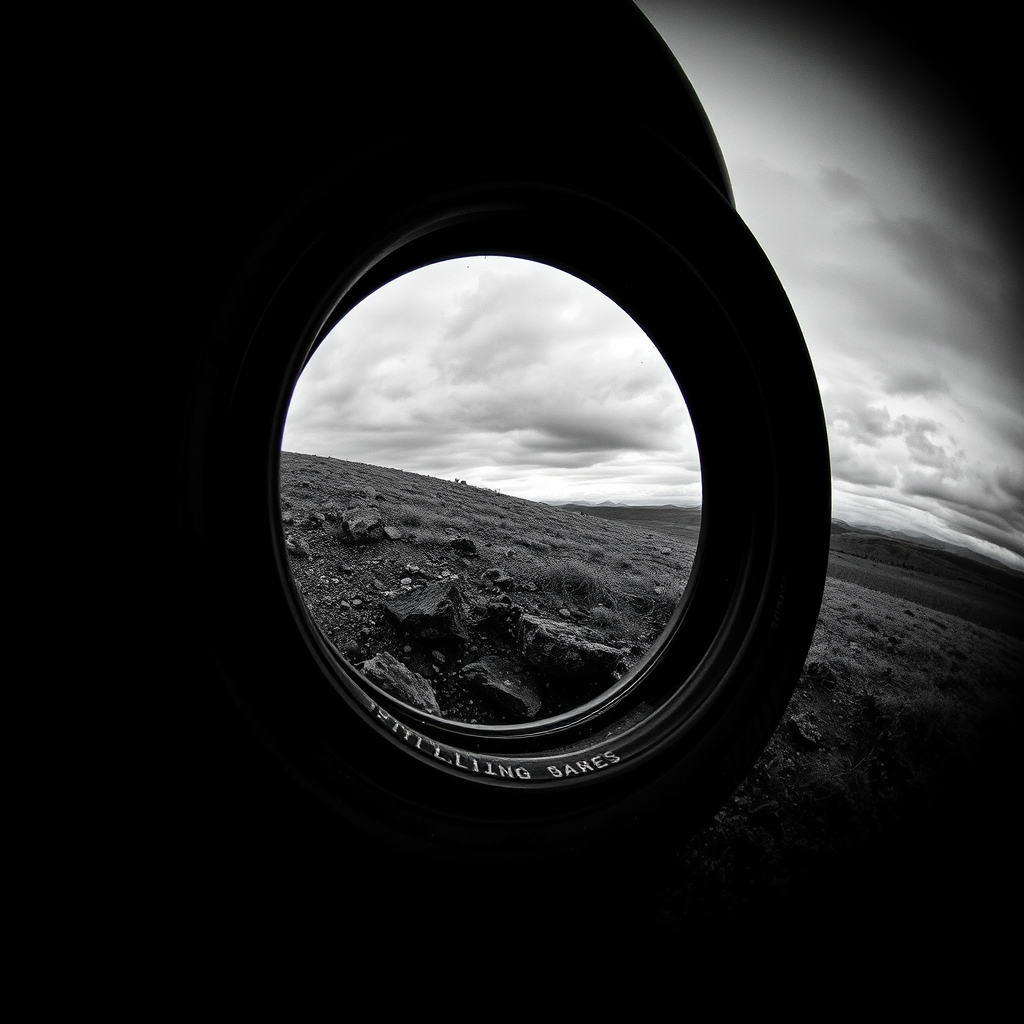


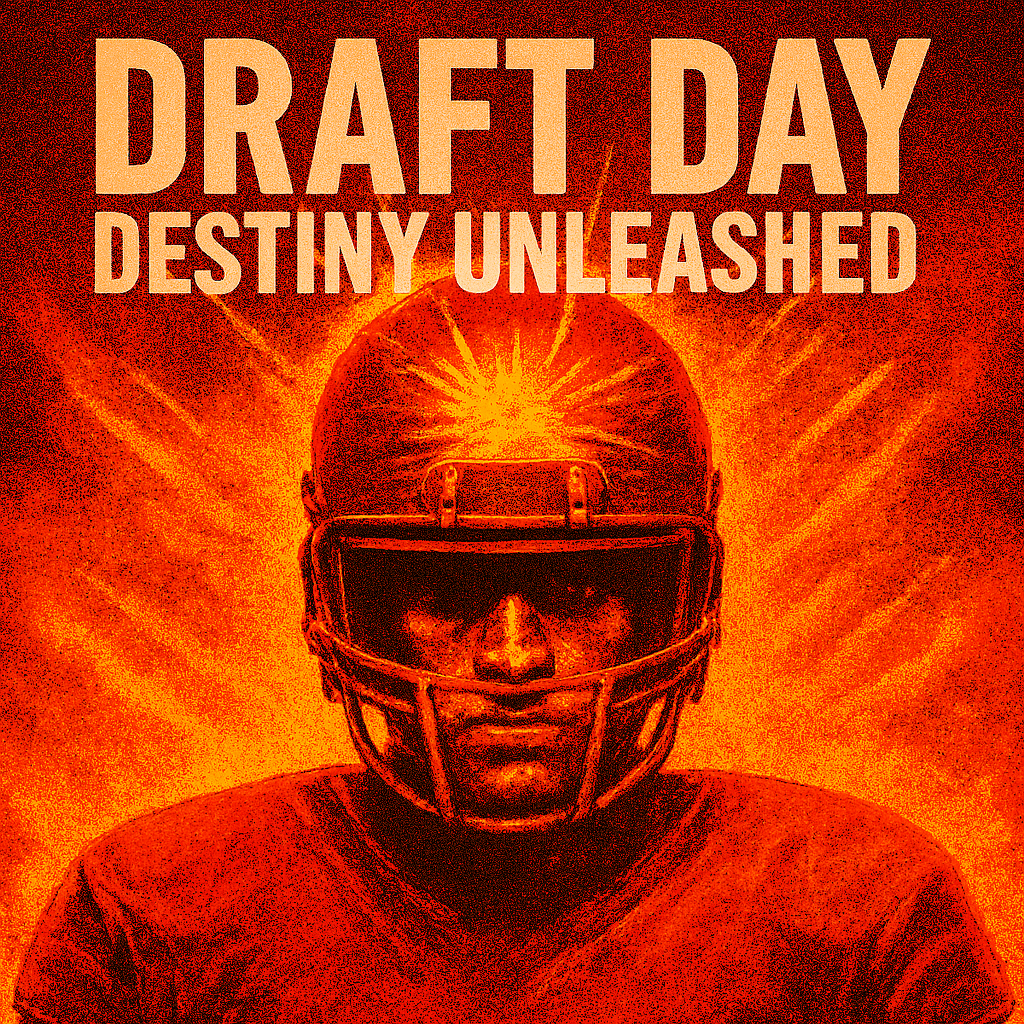
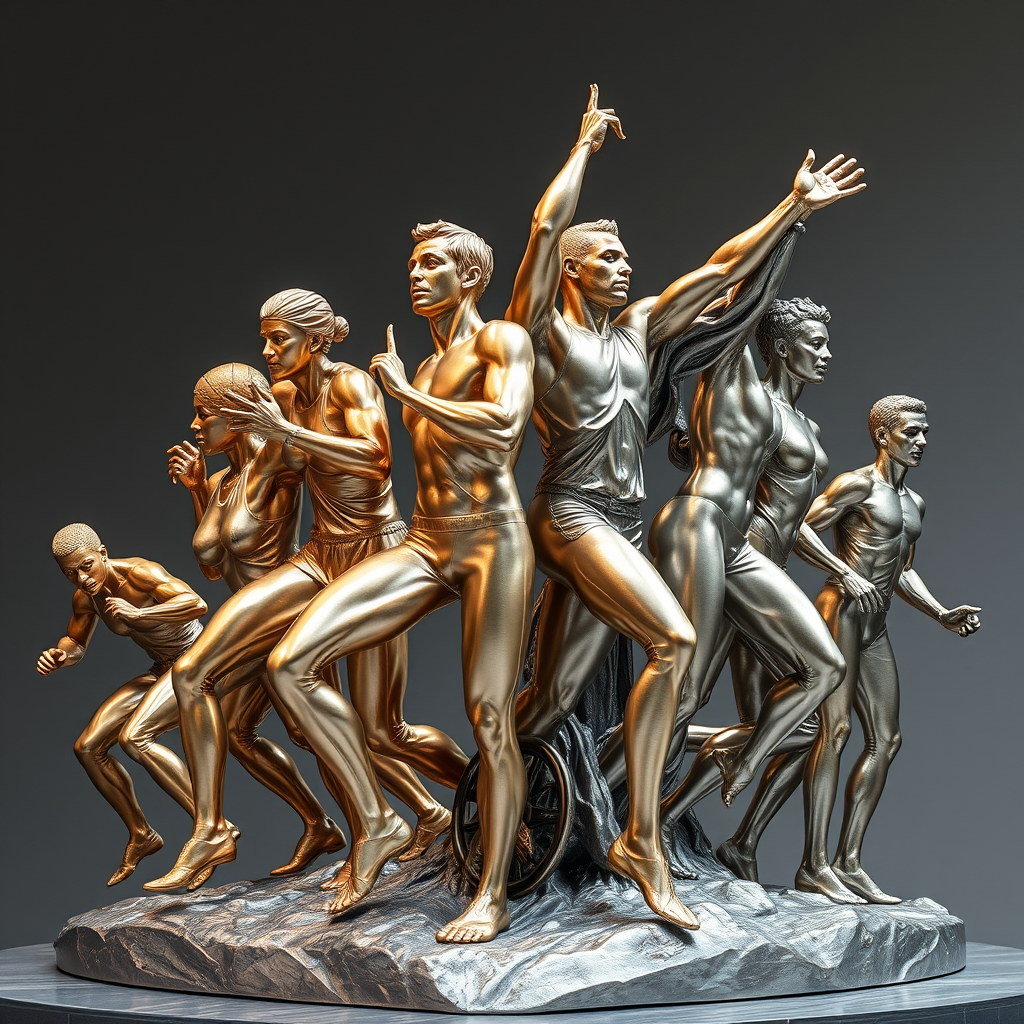





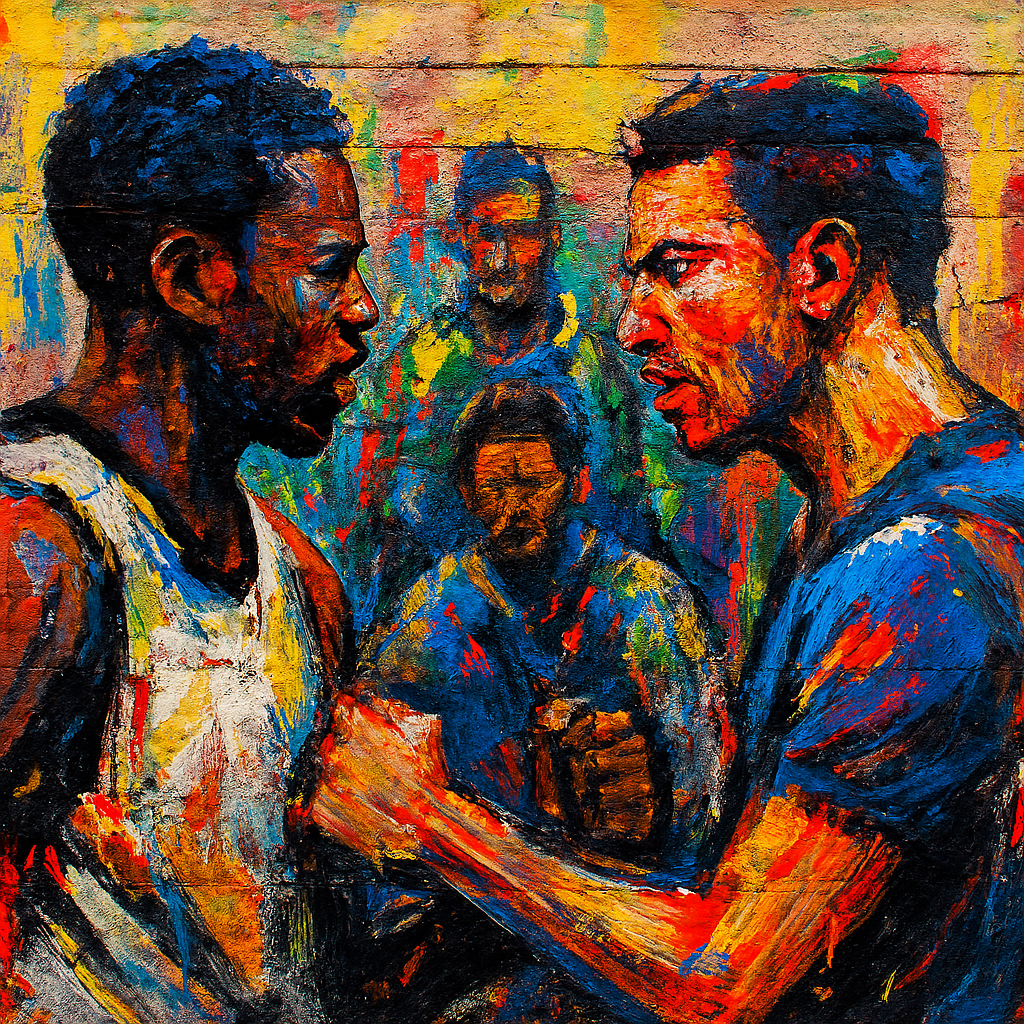



Leave a Reply